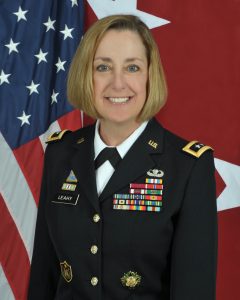A senior Army intelligence official on Thursday detailed the service’s “Project Angel Eye” effort to bolster partnerships with industry on making data science and open source intelligence (OSINT) collection more accessible to military analysts.
Maj. Gen. Mary-Kate Leahy, assistant deputy chief of staff of the Army for Intelligence, said the project involves collaborating with industry to leverage new machine learning tools for data collecting and reporting tools, as well as providing Army personnel with greater access to data science professionals to work on new algorithms.

“The partnership with industry is absolutely critical because we really are on a campaign of learning when it comes to OSINT. Our industry partners are critical to us in terms of software development, AI, machine learning, the tools that our OSINT collectors put into play as well as the training that we’re building so that our OSINT collectors are that much more effective,” Leahy said during an Intelligence and National Security Alliance virtual event.
Leahy detailed Project Angel Eye’s four lines of effort and noted the program has resulted in generating over 100 OSINT reports to date with machine-learning technology.
The project includes the development of a machine learning platform to form a new searchable database for millions of pieces of individual open source and classified information.
“It ingests millions of documents as well as film and other things that are found in publicly-available information and puts them into a searchable database and it will structure the data so that it’s more accessible to the OSINT collector,” Leahy said.
A program called “Angel Eye Automate” is focused on deploying a baseline set of models for automatically prioritizing key pieces of information, while the “Smart OSIR” initiative looks to leave machine learning and natural language processing to automate the analysis of large datasets.
“The system will read documents, discover insights and automatically generate reports comparable to those of a human analysis,” according to a slide Leahy presented during her discussion.